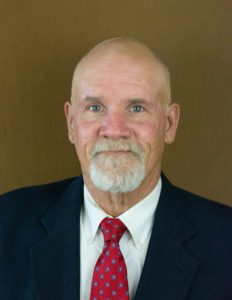Over the last two or three years of writing for PB Oil and Gas Magazine, I’ve covered strategies, philosophies, and techniques. I think I have covered, at least once, all of the main topics and some of the subtle ones as well. In my endeavors to reach the ultimate or penultimate strategy for safety, the pursuit is ever changing. Why, you might ask? The Perfect Strategy is always changing due to our ever-changing world. If you find one strategy that is working, the tendency is to latch onto it and use it until it loses its luster. All the while, the world, the technology, and processes are in constant perpetual motion. So safety is not a destination merely to be found. Safety has to be dynamic! (Dynamic: a force that stimulates change or progress within a system or process. “Evaluation is part of the basic dynamic of the project.”)
There is a difference between “change is constant” and “change is a constant.”
Like anything else in our business, education is strongly encouraged. However, like my father said, “you can’t let school interfere with your education.”
A true safety professional must seek ways and means to stay current with the times, personnel traits, and generational tendencies, as well as the latest research and statistics. Technology is always changing. Politics are always… never mind. What was once the latest and the greatest is yesterday’s news. Ask Tom Brady!
The only bad risk involved in research is not ever growing with what is relevant, and thus growing stagnant.
Our industry, with the influence of OSHA, tends to be stagnant. Methods, communications, processes, and procedures are pretty much covered already. Regardless, our industry is dynamic and constantly changing as are the personnel, due to generational differences and technology. Joy sticks are replacing brake handles. Computers are taking over. Nowadays the drilling units are becoming less reliant on “good hands” and more reliant on computer skills.
Robotic rigs are already in use. Personnel are still required, but the tasks involve new skillsets. As this unfolds, new regulations and new hazards will also be introduced, and ultimately new rules and regulations will ensue. No one likes change except a baby with a wet diaper.
In addition to mechanical changes and personnel changes, record keeping will change with it. So, as you can ascertain, in order to stay on top in safety, forward thinking is also required. The more research you do, the more questions you will have. The more questions you have, the more frequently the answers will vary from the norm.
I know you have heard the phrase in the oil industry, “We’ve always done it this way.” The usual followup to that statement is expressed in the words, “If it’s not broke, don’t fix it.” However, the oil and gas industry is laced with businesses that have gone under due to the fact they were unwilling, untrained, or unable to change with the times.
The same reasoning applies to safety. Do not get me wrong—experience, work ethic, and values will always be a plus. But the innovation of presenting new ideas, thoughts, and reasoning has a place also.
So what I am truly trying to express is that Safety, in of itself, has numerous facets, including new psychology, with the new wave of talent coming up. Given that change, there needs to be some research and innovation to stay relevant to the times. Even doctors, lawyers, and CPA’s take refreshers, in order to stay up with the latest and greatest of rules, trends, and new ideas. I’m not advocating changing anything for change’s sake. I am merely making a case for exploring new ideas and methods to improve performance.
As always, it not how many hits you make in a game! It’s how many times you reach home safe. —Dusty
__________________________________________________________________________________________________
Dusty Roach is a safety professional based in Midland. He is also a public speaker on subjects of leadership and safety, and he maintains a personal website at dustyroach.com.










